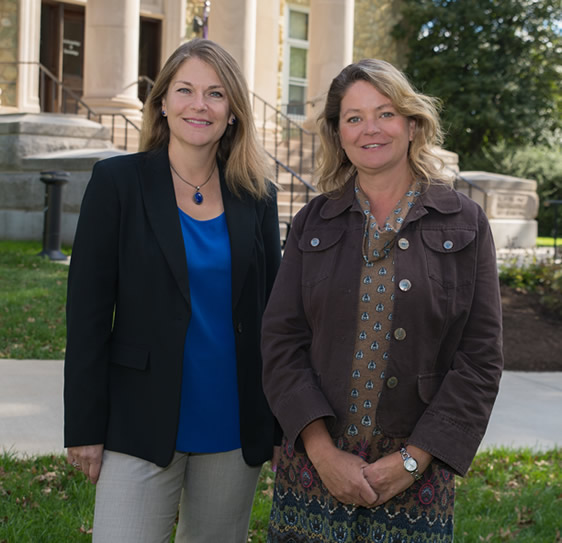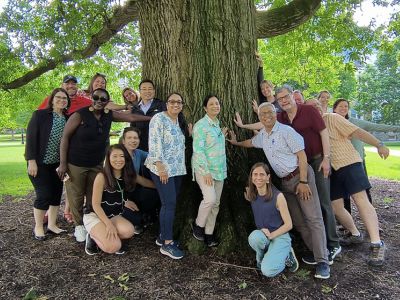January 10, 2019
National Geographic Funds Two WCU Faculty Studying the Impact of Sea Levels Rising in the Delaware Bay

Daria Nikitina (left) and Heather Wholey
It’s a safe bet that many members of our WCU community have driven through the salt marshes heading “downa shore” in New Jersey or to the beaches of Delaware and Maryland. Turtles, crabs, and wading birds occupy the muddy grass hummocks there now, but human habitation at some sites around the Delaware Bay dates back 13,000 years – before the sea level rose, swamped the land, and turned fresh water salty.
Today, with sea level rise accelerating in recent decades, those ecologically rich salt marshes and thousands of archeological sites, many yet undiscovered, will be swamped as well. But before the ocean claims any more Delaware Bay marshes, two WCU faculty members are studying what the area can tell us about prehistoric peoples and climate change. Their current research has been augmented with a two-year, $30,000 National Geographic Explorers Grant.
WCU geologist Daria Nikitina and WCU anthropologist/archeologist Heather Wholey took students to Delaware’s Milford Neck Wildlife Area last year to assess the archeological and ecological impacts of rising sea levels. Under the National Geographic grant, they will be able to explore additional sites.
About those sites lost to total inundation, Wholey says that even “if we’re at least able to document these sites, even if they are not saved, they will become part of our collective knowledge and history.”
Read more about this research in the current issue of the WCU magazine.
Recent University News

West Chester University to Welcome Good Morning America's Robin Roberts on April 4

West Chester University Participates in Make-A-Wish Wish Reveal During Home Basketball Game

Author Michael Wolraich Visits WCU for Lecture and Book Signing for The Bishop and the Butterfly

